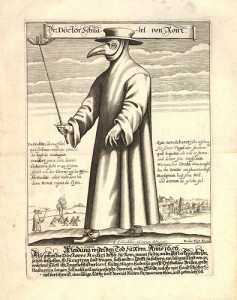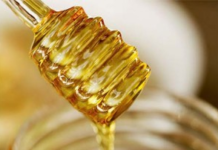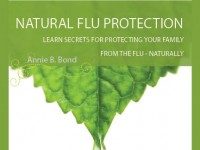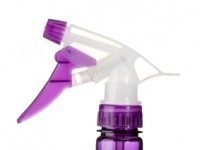

We all know the hand “soap” found in restrooms everywhere that boasts that it is antimicrobial on the label. Have you ever stopped to wonder what is in to kill the germs? Most of the products on the market that are advertised to kill germs on surfaces are made with synthetic chemicals, such as Triclosan, and can cause superbug overgrowth. According to Stuart B. Levy, of Tufts University School of Medicine, commonly used disinfectants and antimicrobial agents are causing the same problem as overuse of antibiotics. Using a product that contributes to superbug overgrowth is especially dangerous in places filled with children, sick people, and the elderly.
In the United States a product can only be labeled and advertised as a disinfectant or antimicrobial agent after it has been registered as a pesticide with the Environmental Protection Agency (EPA). The vast majority of the products approved contain Triclosan or other synthetic chemicals that can contribute to superbug overgrowth. Fortunately, there are now also EPA-registered products on the market that are safer, such as a 100 percent botanical disinfectant, as well as a “green” version using silver that has the lowest toxicity rating with the EPA.
 Herbs and essential oils are not known to cause drug resistance, and many studies concur that many if not most botanicals have remarkable abilities to kill all types of germs, which is why they have been used for centuries in home remedies. In my research, I came across a remarkable formula called The Vinegar of the Four Thieves or Grave Robber’s Blend. The story behind the formula speaks volumes about plants and their germ-killing properties. Having grown up with Western medicine, we might not think about herbs and essential oils as ways to keep germs at bay, but they are effective, and this method used to be commonplace.
Herbs and essential oils are not known to cause drug resistance, and many studies concur that many if not most botanicals have remarkable abilities to kill all types of germs, which is why they have been used for centuries in home remedies. In my research, I came across a remarkable formula called The Vinegar of the Four Thieves or Grave Robber’s Blend. The story behind the formula speaks volumes about plants and their germ-killing properties. Having grown up with Western medicine, we might not think about herbs and essential oils as ways to keep germs at bay, but they are effective, and this method used to be commonplace.
The Vinegar of the Four Thieves
Around the time of the Black Plague, a family of perfumers robbed the dead. As perfumers, they knew well which essential oils had antiseptic properties, and they infused those in vinegar and rubbed them on their bodies. By doing so, they protected themselves from certain death. The doctors of the time used the same herbs and essential oils to protect themselves while tending to those who were contagious. They wore big draping cloaks over their heads that reached down well below their shoulders. A hole was made for the nose, and attached to the cloak was a 10-inch-long canoe-shaped beak full of antiseptic herbs and essential oils.
To make The Vinegar of the Four Thieves, place a small handful each of dried lavender, rosemary, sage, rue and mint in a gallon jar, and cover completely with organic apple cider vinegar. Cover tightly and set for six weeks. Strain and pour into a spray bottle. Whereas no home can be made completely sterile, the powerfully antiseptic Vinegar of Four Thieves formula can be sprayed on surfaces of concern, such as on cutting boards and door knobs, always making sure to avoid your eyes.
Research is confirming that the old folk recipes using herbs and essential oils to kill germs– such as those used by 14th century doctors during the Black Plague–were based on good science. Many essential oils, such as the oils of oregano, lavender, and thyme, are more antiseptic than phenol, the industry standard. As of yet, essential oils aren’t individually approved by the EPA, FDA, or CDC as germ killers. However, the antiseptic and antiviral properties of certain essential oils—as well as their safety and nontoxicity—have been well established.
By Annie B. Bond, best-selling and award-winning author of five green living books, thousands of blogs, and all the tips in the Greenify Everything app. Called “The Godmother of Green” by Martha Stewart Sirius Radio.




I’ve seen a few references to similar concoctions and hope there is a reduction in purchase and use of eco-unfriendly sanitizer gels, sprays and wipes. That being said, vinegar on its own is a great agent, either full strength or diluted. Add a bit of tea tree oil along with one of the pleasantly scented oils mentioned above, and you’ve got the ideal product. Our beloved Care2 site has numerous articles and recipes for same.
The most current mention I’ve seen stated that hospitals can safely use non-chemical agents and make a huge impact. How can we spread the word…and not the germs? ;~)
And love Green Chai Cafe! Joined this morning and very much looking forward to a good read on a regular basis.
HI -Thanks for writing! I was the executive editor of green living content on care2 for eight years, so the recipes you mention were most likely from me!
==Annie,
editor-in-chief, http://www.greenchicafe.com
[…] Although it doesn’t have a 99.9 percent kill rate like hospital grade disinfectants, vinegar kills germs, bacteria, and molds. Another way to enhance vinegar is to combine it with antiseptic herbs, such as is found in the famous Vinegar of the Four Thieves. […]
Thieves oil has been tested and found to be
highly effective in supporting the immune system and
good health.
Comments are closed.